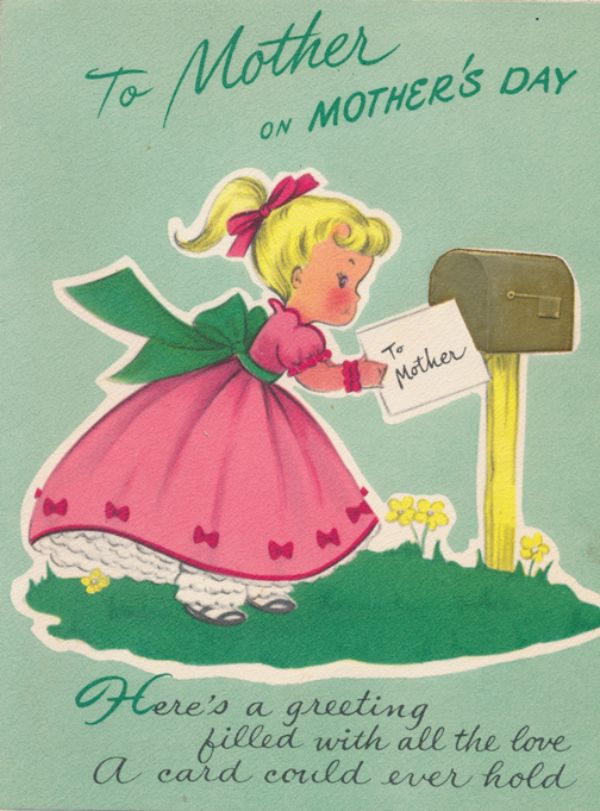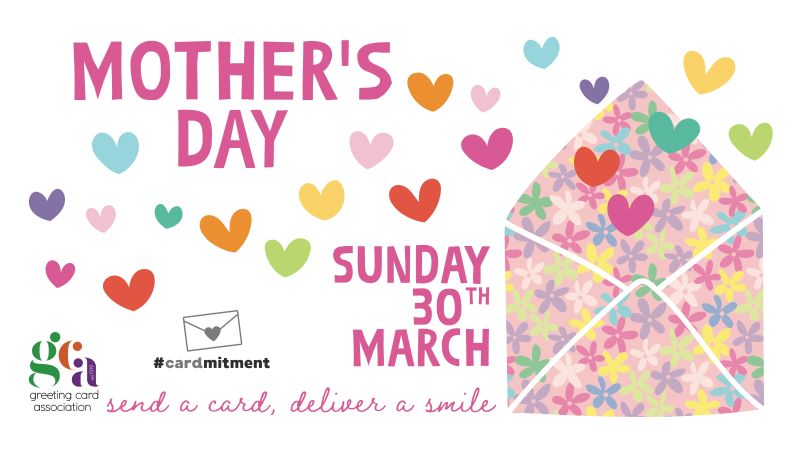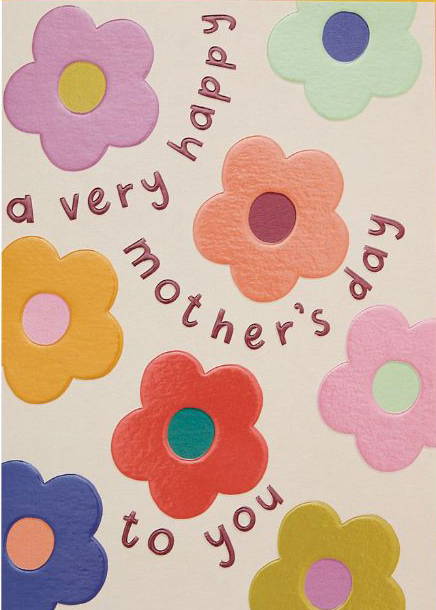
Mother’s Day is celebrated across the world. In the UK we celebrate our Mother’s on the 4th Sunday in Lent, while other countries celebrate Mother’s Day on different days. In this article we’ll take a look at the history of Mother’s Day and it’s importance in today’s world.
Love thy mother
In the United Kingdom we love our mothers; in fact, we spent £66 million on greeting cards for our mum’s in 2023, according to the Greeting Card Association’s Annual Market Report*.
We are also seeing an increase in sales of cards with captions ‘like a mum to me’ and similar, with 89% of consumers saying that they plan to send the same or more Mother’s Day cards in the future according to the Greeting Card Association Consumer Survey Report** conducted in the summer of 2021.
The origins of Mothering Sunday
Ancient history and mythology is filled with stories about special mothers, but the roots of the British Mother’s Day, or Mothering Sunday as it was originally known, are in the 17th century.
At that time many young people were ‘in service’ and seldom allowed out. It became a custom for employers to give staff a day off on the fourth Sunday of Lent so that they could visit their parents and their mother church. They took gifts, often including Simnel cake, a light fruit cake associated with Easter. Consequently, the day was referred to as ‘Simnel Sunday’ and visits were called ‘going a-mothering’ – hence Mothering Sunday.
The Date of Mother’s Day around the world
While in the UK Mother’s Day continues to be celebrated on the 4th Sunday of Lent, in other parts of the world Mother’s are remembered on different dates – Polish Mother’s Day is on 26th May for example. Many countries celebrate on the second Sunday in May, following the lead of the USA. The origins for this come from the USA, where Mother’s Day was first celebrated in 1908 after Anna Jarvis, a daughter from Philadelphia, held a memorial for her mother who had organized women’s groups to promote friendship and health. Within five years virtually every State was observing the day, and in 1914 U.S. President Woodrow Wilson signed a proclamation designating Mother’s Day the second Sunday in May.
Mother’s Day Cards
Greeting cards have played an increasing important part in British communication since the first Christmas card was sent in 1843 by Sir Henry Cole. Card sending in the UK increased dramatically in the early 20th century, with cards playing a particularly important role in communication during the two world wars.
Mother’s Day cards really took off in the UK when the wartime GIs won the hearts of younger women with nylons and chewing gum, and many of the homesick Americans also saw their landladies as substitute mums, causing their hearts to flutter by sending cards with appropriate messages. Not to be outshone, British boys and girls soon followed suit and by the end of the war, Mother’s Day cards were here to stay.


Post-war, sending a greeting card increasingly became the chosen way to mark special occasions, express sympathy and just say Thinking of You. Scientific research undertaken in 2017 by Royal Mail demonstrated the impact of receiving a Mother’s Day card.
Mothering Sunday has gradually become known as Mother’s Day in the UK too, however here it continues to be celebrated on the fourth Sunday in lent, which was originally the day of St Anne, mother of the Virgin Mary. In the US and other countries Mother’s Day continues to be the second Sunday in May, so a few lucky mothers that have sons or daughters living in the USA have two special days every year!
Mother’s Day is now as established calendar event where we annually remember and celebrate our mum’s. The Greeting Card Association provides free down-loadable toolkit for retailers to use remind everyone to buy their cards!
Retailer’s Mother’s Day Toolkit
Use the GCA’s free Mother’s Day toolkit to promote the season with your customers, included are social media posts as well as signed that can be used in stores.

Mother’s Day Facts
- Mothers are honoured on the fourth Sunday in Lent the United Kingdom, but in Australia the US and Canada they have their day on the second Sunday in May.
- British ‘mums’ opened over 29 million cards on Mothering Sunday 2023*
- We spent £66m at retail on our Mother’s in 2024, the average price of a Mother’s Day card was £2.26.*
- In 1912, it became an American tradition to wear white carnations on Mother’s Day to symbolise the sweetness purity and endurance of motherhood.
- The UK population are a nation of cards senders – sending more cards per capita than any other nation.
- We spent over £1.5 billion on single greeting cards in 2023* [NB: This figure excludes packs and boxes of cards]
- Over three quarters of these sales [77%] are for everyday cards, sent for birthdays and other occasions throughout the year*.
- Sales for Valentine’s Day, Mother’s day, Easter and Father’s Day account for just 11% by value of the total single card market.
- Greeting cards is a world-leading British Creative industry; we lead the world in innovative design and export our cards all over the world.
- Cards are a good tangible way of keeping in touch, and mean more than a social media message which are sent all the time.
- 18-34 year olds are sending more cards than a generation ago. This trend is being seen in US too – Millennial’s were responsible for the 44m more cards sent in 2018 according to the USPS.
- There is an increase in ‘all occasion’ cards, sending cards to people just to say hello, share a joke, image provoking a memory, express how you feel, thinking of you.
*Source: The Greeting Card Association Annual Market Report which covers UK greeting card sales for single greeting cards in 2023 compared to 2022.
** Source: Greeting Card Association Consumer Survey Report conducted in summer 2021. This includes information on changes in purchasing during and after the COVID-19 pandemic.
Mother’s Day Cards
A selection of Mother’s Day cards by members of the GCA…










